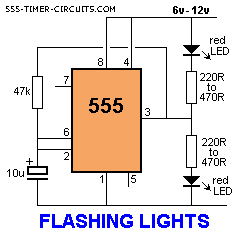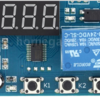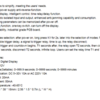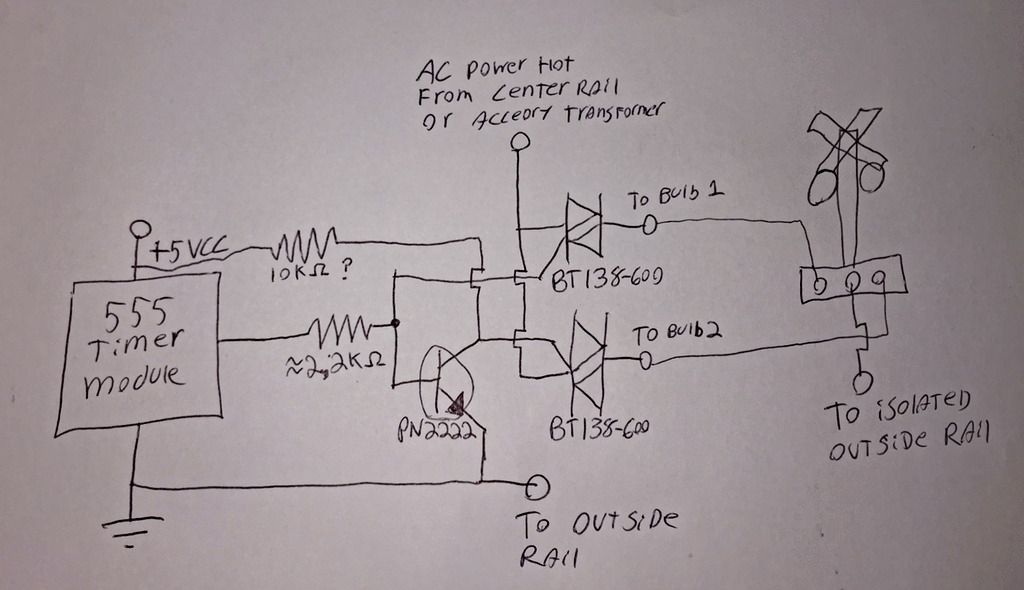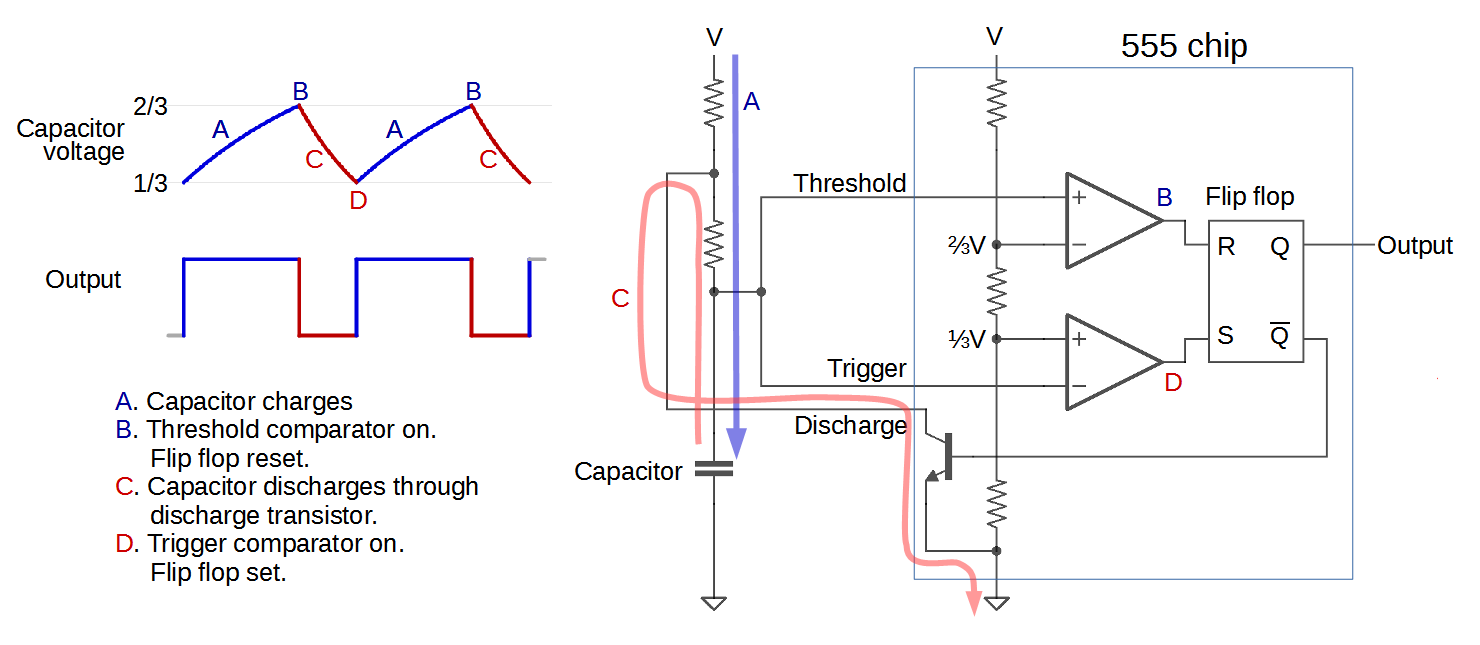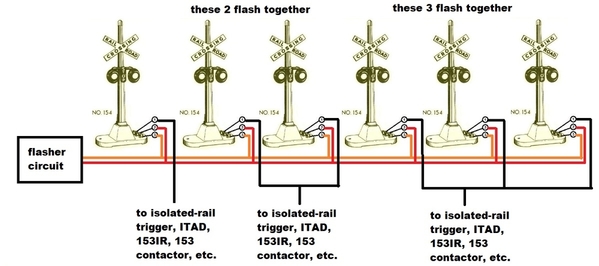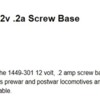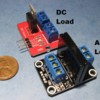Folks,
I'm starting to install the many 154 highway crossing flashers that I've kept since my Lionel layout days back in the 50's. I know the modern versions of this accessory have a switching circuit built in to alternately flash the lights... none of mine do.
Back in the day we used the 154C connector to "flash" the bulbs. But we weren't satisfied with the way they worked, so we made an "always on" flasher. Since this was before any modern electronic switching circuits were available (at least to us kids) we decided to make a mechanical one.
Using an Erector set motor to turn a 4-inch length of broomstick, we placed brass upholstery tacks around the stick alternating them side-by-side about every half inch; we wired them all together and connected them to a brass strip wrapped around the stick. Next we built a wood frame with three wipers to contact the rotating stick; one rode on the brass strip to provide constant power to the tacks and the other two were positioned to alternately contact the tacks as the stick rotated.
Wiring was 14 volts from the transformer to the continuous contact wiper, while the other two got either the red or black wire of a twisted pair that alternately provided 14 volts to flash the lights. Hook them each up to one of the bulb terminals on the flashers and all we had to do was use an insulated rail to operate the signal. When train axles completed the circuit, the bulbs would alternately flash until the train had passed.
Once we had the red/black twisted pair working we could just run it around under the layout as a buss wire and hook up to all the other crossing signals. If trains were coincidentally activating them all, sure they all flashed at the same time, but who cares... we were kids!
So with that as a background, is there a modern switching circuit that could provide the same alternating power to my new black/red twisted pair? I've wondered if maybe there's an automotive flasher that provides the same wig-wag alternating between two flasher bulbs; like maybe the old fashioned turn signal flashers. And would there be any problem with a modern electronic circuit if it had to power more than six or eight of the signals at once?
I also wonder if there may be a modern circuit that doesn't even send power to the red/black pair until it detects that a ground circuit has been completed and the bulbs need to start flashing. That way, it wouldn't have to be "always on", but I'm in way over my head now. Any help from the electrical engineers out there, please?
Thanks,
Fj




